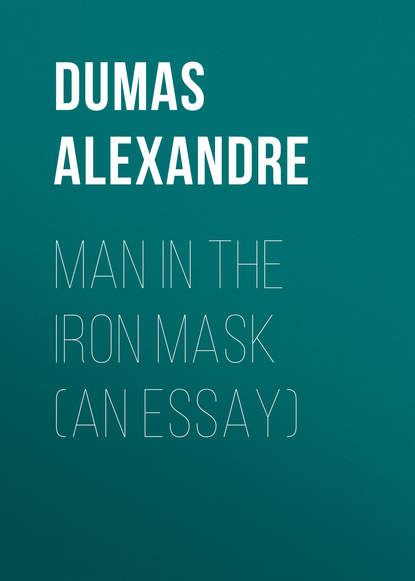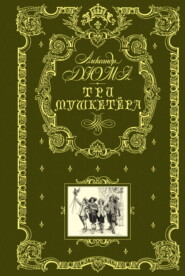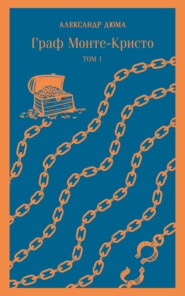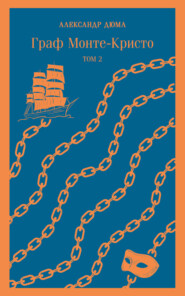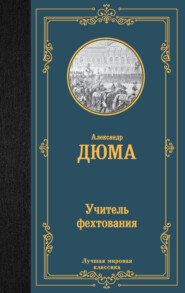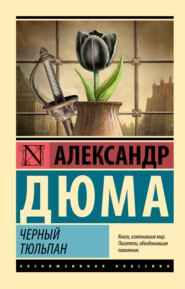По всем вопросам обращайтесь на: info@litportal.ru
(©) 2003-2024.
✖
Man in the Iron Mask (an Essay)
Настройки чтения
Размер шрифта
Высота строк
Поля
In 1802 an octavo pamphlet containing 11 pages, of which the author was perhaps Baron Lerviere, but which was signed Reth, was published. It took the form of a letter to General Jourdan, and was dated from Turin, and gave many details about Matthioli and his family. It was entitled ‘Veritable Clef de l’Histoire de l’Homme au Masque de Fer’. It proved that the secretary of the Duke of Mantua was carried off, masked, and imprisoned, by order of Louis XIV in 1679, but it did not succeed in establishing as an undoubted fact that the secretary and the Man in the Iron Mask were one and the same person.
It may be remembered that M. Crawfurd writing in 1798 had said in his ‘Histoire de la Bastille’ (8vo, 474 pages), “I cannot doubt that the Man in the Iron Mask was the son of Anne of Austria, but am unable to decide whether he was a twin-brother of Louis XIV or was born while the king and queen lived apart, or during her widowhood.” M. Crawfurd, in his ‘Melanges d’Histoire et de Litterature tires dun Portefeuille’ (quarto 1809, octavo 1817), demolished the theory advanced by Roux-Fazillac.
In 1825, M. Delort discovered in the archives several letters relating to Matthioli, and published his Histoire de l’Homme au Masque de Fer (8vo). This work was translated into English by George Agar-Ellis, and retranslated into French in 1830, under the title ‘Histoire authentique du Prisonnier d’Etat, connu sons le Nom de Masque de Fer’. It is in this work that the suggestion is made that the captive was the second son of Oliver Cromwell.
In 1826, M. de Taules wrote that, in his opinion, the masked prisoner was none other than the Armenian Patriarch. But six years later the great success of my drama at the Odeon converted nearly everyone to the version of which Soulavie was the chief exponent. The bibliophile Jacob is mistaken in asserting that I followed a tradition preserved in the family of the Duc de Choiseul; M. le Duc de Bassano sent me a copy made under his personal supervision of a document drawn up for Napoleon, containing the results of some researches made by his orders on the subject of the Man in the Iron Mask. The original MS., as well as that of the Memoires du Duc de Richelieu, were, the duke told me, kept at the Foreign Office. In 1834 the journal of the Institut historique published a letter from M. Auguste Billiard, who stated that he had also made a copy of this document for the late Comte de Montalivet, Home Secretary under the Empire.
Dufey (de l’Yonne) gave his ‘Histoire de la Bastille’ to the world in the same year, and was inclined to believe that the prisoner was a son of Buckingham.
Besides the many important personages on whom the famous mask had been placed, there was one whom everyone had forgotten, although his name had been put forward by the minister Chamillart: this was the celebrated Superintendent of Finance, Nicolas Fouquet. In 1837, Jacob, armed with documents and extracts, once more occupied himself with this Chinese puzzle on which so much ingenuity had been lavished, but of which no one had as yet got all the pieces into their places. Let us see if he succeeded better than his forerunners.
The first feeling he awakes is one of surprise. It seems odd that he should again bring up the case of Fouquet, who was condemned to imprisonment for life in 1664, confined in Pignerol under the care of Saint-Mars, and whose death was announced (falsely according to Jacob) on March 23rd, 1680. The first thing to look for in trying to get at the true history of the Mask is a sufficient reason of state to account for the persistent concealment of the prisoner’s features till his death; and next, an explanation of the respect shown him by Louvois, whose attitude towards him would have been extraordinary in any age, but was doubly so during the reign of Louis XIV, whose courtiers would have been the last persons in the world to render homage to the misfortunes of a man in disgrace with their master. Whatever the real motive of the king’s anger against Fouquet may have been, whether Louis thought he arrogated to himself too much power, or aspired to rival his master in the hearts of some of the king’s mistresses, or even presumed to raise his eyes higher still, was not the utter ruin, the lifelong captivity, of his enemy enough to satiate the vengeance of the king? What could he desire more? Why should his anger, which seemed slaked in 1664, burst forth into hotter flames seventeen years later, and lead him to inflict a new punishment? According to the bibliophile, the king being wearied by the continual petitions for pardon addressed to him by the superintendent’s family, ordered them to be told that he was dead, to rid himself of their supplications. Colbert’s hatred, says he, was the immediate cause of Fouquet’s fall; but even if this hatred hastened the catastrophe, are we to suppose that it pursued the delinquent beyond the sentence, through the long years of captivity, and, renewing its energy, infected the minds of the king and his councillors? If that were so, how shall we explain the respect shown by Louvois? Colbert would not have stood uncovered before Fouquet in prison. Why should Colbert’s colleague have done so?
It must, however, be confessed that of all existing theories, this one, thanks to the unlimited learning and research of the bibliophile, has the greatest number of documents with the various interpretations thereof, the greatest profusion of dates, on its side.
For it is certain —
1st, that the precautions taken when Fouquet was sent to Pignerol resembled in every respect those employed later by the custodians of the Iron Mask, both at the Iles Sainte-Marguerite and at the Bastille;
2nd, that the majority of the traditions relative to the masked prisoner might apply to Fouquet;
3rd, that the Iron Mask was first heard of immediately after the announcement of the death of Fouquet in 1680;
4th, that there exists no irrefragable proof that Fouquet’s death really occurred in the above year.
The decree of the Court of justice, dated 20th December 1664, banished Fouquet from the kingdom for life. “But the king was of the opinion that it would be dangerous to let the said Fouquet leave the country, in consideration of his intimate knowledge of the most important matters of state. Consequently the sentence of perpetual banishment was commuted into that of perpetual imprisonment.” [‘Receuil des defenses de M. Fouquet’). The instructions signed by the king and remitted to Saint-Mars forbid him to permit Fouquet to hold any spoken or written communication with anyone whatsoever, or to leave his apartments for any cause, not even for exercise. The great mistrust felt by Louvois pervades all his letters to Saint-Mars. The precautions which he ordered to be kept up were quite as stringent as in the case of the Iron Mask.
The report of the discovery of a shirt covered with writing, by a friar, which Abbe Papon mentions, may perhaps be traced to the following extracts from two letters written by Louvois to Saint-Mars: “Your letter has come to hand with the new handkerchief on which M. Fouquet has written” (18th Dec. 1665 ); “You can tell him that if he continues too employ his table-linen as note-paper he must not be surprised if you refuse to supply him with any more” ( 21st Nov. 1667).
Pere Papon asserts that a valet who served the masked prisoner died in his master’s room. Now the man who waited on Fouquet, and who like him was sentenced to lifelong imprisonment, died in February 1680 (see letter of Louvois to Saint-Mars, 12th March 1680). Echoes of incidents which took place at Pignerol might have reached the Iles Sainte-Marguerite when Saint-Mars transferred his “former prisoner” from one fortress to the other. The fine clothes and linen, the books, all those luxuries in fact that were lavished on the masked prisoner, were not withheld from Fouquet. The furniture of a second room at Pignerol cost over 1200 livres (see letters of Louvois, 12th Dec. 1665, and 22nd Feb, 1666).
It is also known that until the year 1680 Saint-Mars had only two important prisoners at Pignerol, Fouquet and Lauzun. However, his “former prisoner of Pignerol,” according to Du Junca’s diary, must have reached the latter fortress before the end of August 1681, when Saint-Mars went to Exilles as governor. So that it was in the interval between the 23rd March 1680, the alleged date of Fouquet’s death, and the 1st September 1681, that the Iron Mask appeared at Pignerol, and yet Saint-Mars took only two prisoners to Exilles. One of these was probably the Man in the Iron Mask; the other, who must have been Matthioli, died before the year 1687, for when Saint-Mars took over the governorship in the month of January of that year of the Iles Sainte-Marguerite he brought only ONE prisoner thither with him. “I have taken such good measures to guard my prisoner that I can answer to you for his safety” [‘Lettres de Saint-Mars a Louvois’, 20th January 1687).
In the correspondence of Louvois with Saint-Mars we find, it is true, mention of the death of Fouquet on March 23rd, 1680, but in his later correspondence Louvois never says “the late M. Fouquet,” but speaks of him, as usual, as “M. Fouquet” simply. Most historians have given as a fact that Fouquet was interred in the same vault as his father in the chapel of Saint-Francois de Sales in the convent church belonging to the Sisters of the Order of the Visitation-Sainte-Marie, founded in the beginning of the seventeenth century by Madame de Chantal. But proof to the contrary exists; for the subterranean portion of St. Francis’s chapel was closed in 1786, the last person interred there being Adelaide Felicite Brulard, with whom ended the house of Sillery. The convent was shut up in 1790, and the church given over to the Protestants in 1802; who continued to respect the tombs. In 1836 the Cathedral chapter of Bourges claimed the remains of one of their archbishops buried there in the time of the Sisters of Sainte-Marie. On this occasion all the coffins were examined and all the inscriptions carefully copied, but the name of Nicolas Fouquet is absent.
Voltaire says in his ‘Dictionnaire philosophique’, article “Ana,” “It is most remarkable that no one knows where the celebrated Fouquet was buried.”
But in spite of all these coincidences, this carefully constructed theory was wrecked on the same point on which the theory that the prisoner was either the Duke of Monmouth or the Comte de Vermandois came to grief, viz. a letter from Barbezieux, dated 13th August 1691, in which occur the words, “THE PRISONER WHOM YOU HAVE HAD IN CHARGE FOR TWENTY YEARS.” According to this testimony, which Jacob had successfully used against his predecessors, the prisoner referred to could not have been Fouquet, who completed his twenty-seventh year of captivity in 1691, if still alive.
We have now impartially set before our readers all the opinions which have been held in regard to the solution of this formidable enigma. For ourselves, we hold the belief that the Man in the Iron Mask stood on the steps of the throne. Although the mystery cannot be said to be definitely cleared up, one thing stands out firmly established among the mass of conjecture we have collected together, and that is, that wherever the prisoner appeared he was ordered to wear a mask on pain of death. His features, therefore, might during half a century have brought about his recognition from one end of France to the other; consequently, during the same space of time there existed in France a face resembling the prisoner’s known through all her provinces, even to her most secluded isle.
Whose face could this be, if not that of Louis XVI, twin-brother of the Man in the Iron Mask?
To nullify this simple and natural conclusion strong evidence will be required.
Our task has been limited to that of an examining judge at a trial, and we feel sure that our readers will not be sorry that we have left them to choose amid all the conflicting explanations of the puzzle. No consistent narrative that we might have concocted would, it seems to us, have been half as interesting to them as to allow them to follow the devious paths opened up by those who entered on the search for the heart of the mystery. Everything connected with the masked prisoner arouses the most vivid curiosity. And what end had we in view? Was it not to denounce a crime and to brand the perpetrator thereof? The facts as they stand are sufficient for our object, and speak more eloquently than if used to adorn a tale or to prove an ingenious theory.





